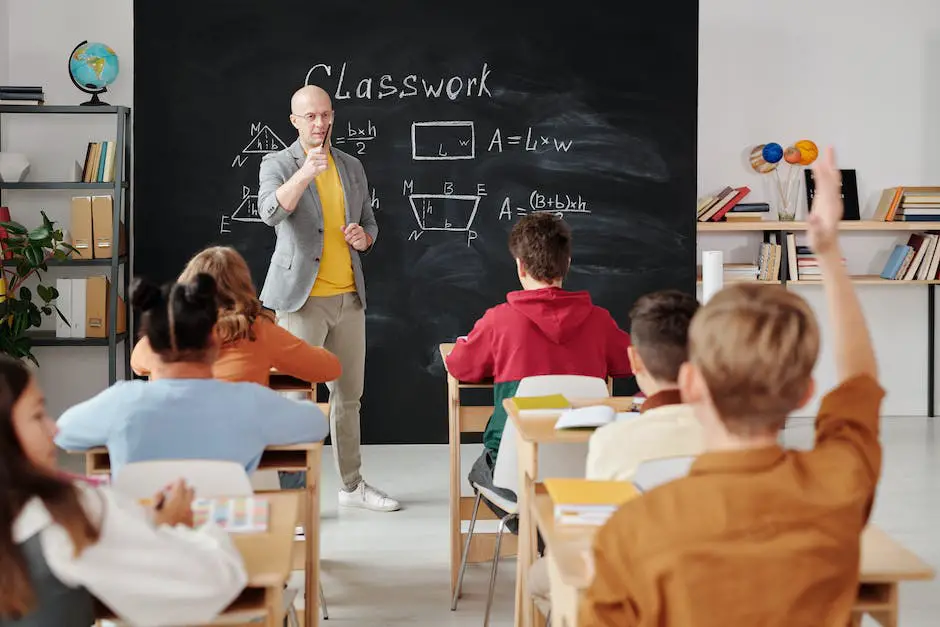
For those trying to figure out what are learning outcomes, its types, steps, and assessments, this article is for you. Read on to find out more about this guide in developing your teaching strategies.
Table of Contents
Introduction
In today’s education landscape, learning outcomes play a pivotal role in shaping the educator’s teaching strategies and heralding the academic progress of students. Defining the road map of a learning session, the learning outcomes focus on the knowledge, skills, and attitudes that learners should grasp upon the completion of a course or program.
The relevance and applicability of learning outcomes extend to both the educators and the learners, providing the former with a clear teaching structure and the latter with expectations for their learning.
In the broader sense, understanding these integral aspects of our education system would be incomplete without delving into the types of learning outcomes, elucidating the steps involved in formulating them, exploring their assessment, and shedding light on their impacts and challenges.
Defining Learning Outcomes
What are Learning Outcomes?
Learning outcomes are statements that describe the knowledge, skills, and attitudes that students should have after completing a learning activity or program. These outcomes articulate what students should know or be able to do as a result of the learning experience. This includes knowledge gained, new skills acquired, a deepened understanding of the subject matter, attitudes and values influenced by learning, as well as changes in behavior that can be applied in specific contexts.
Learning outcomes are statements that describe the knowledge, skills, and attitudes that students should have after completing a learning activity or program.
Learning outcomes are critical in the educational setting because they guide the design of curriculum, instruction, and assessment methods. They are the foundation of a course outline or syllabus, providing clear direction for what will be taught, how it will be taught, and how learning will be assessed. They hold teachers accountable for delivering effective instruction that leads to desired learning outcomes and help students understand what is expected of them, enhancing their learning experience.
Learning outcomes also equip students with transferrable skills and knowledge. They provide a clear description of what the learner can apply in real-world contexts or in their further studies. This makes learning outcomes not only crucial in the academic setting but also in preparing learners for the workforce.
Differentiating Learning Outcomes from Learning Objectives
Learning outcomes and learning objectives are often used interchangeably. However, they have distinct meanings and roles in education.
Learning Objectives
Learning objectives are more teacher-centered and describe what the teacher intends to teach or what the instruction aims to achieve in the scope of a lesson or unit. These may involve specific steps or methodologies used to impart knowledge or skills to the students.
Learning Outcomes
On the other hand, learning outcomes are student-centered and focus on what the student is expected to learn and demonstrate at the end of a learning period. These are usually measurable and observable, making them useful tools for assessing a student’s learning progress and the effectiveness of a lesson or course.
For instance, a learning objective may state, “The teacher will explain the process of photosynthesis.” The associated learning outcome could be, “Students will be able to describe the process of photosynthesis and explain its importance to plant life.”
Examples of Learning Outcomes
Various academic disciplines utilize explicit learning outcomes to provide students with a clear understanding of what they are expected to achieve by the end of a course, unit, or lesson. Here are some examples:
- Mathematics: By the close of the course, students should be capable of solving linear equations and inequalities.
- Science: Upon finishing the module, students will be equipped to accurately elucidate the importance of DNA in genetic inheritance.
- English: Students should be proficient in crafting an organized, eloquent essay that effectively puts forth an argument.
- Social Studies: By the term’s conclusion, students should possess the ability to assess the impacts of World War II from varied perspectives.
- Arts: After completing the lesson, learners should be adept at recreating a piece of art employing learnt techniques, such as watercolor painting.
These specific learning outcomes are instrumental in steering the progress of students throughout their educational journey. They provide key alignment within the education system, ensuring that instructions, learning activities, assessments, and feedback are all constructed around accomplishing these predefined objectives.

3 Types of Learning Outcomes
1. Knowledge Outcomes
Knowledge outcomes represent a student’s capacity to remember and comprehend the information and concepts imparted during lessons. These outcomes are usually assessed through examinations or tests, which gauge how well the student has retained the information.
To illustrate, a history student may be tested on their ability to remember specific dates or events, whereas a science student may be required to understand and demonstrate the process of photosynthesis.
This strand of learning outcomes is generally divided into two categories: declarative knowledge and procedural knowledge. Declarative knowledge outcomes evaluate the student’s aptitude to recollect and identify factual information, such as the capital city of a country. In contrast, procedural knowledge outcomes measure the student’s ability to utilize rules and processes fruitfully to solve problems, such as mathematical calculations. Thus, both these subsets form the bedrock of a student’s academic accomplishments.
2. Skill Outcomes
Skill outcomes assess a student’s ability to apply learned theories or concepts within real-world contexts. These are practical skills often developed through hands-on experience and active participation, such as fieldwork or lab experiments. They may also stem from the application of theoretical knowledge to solve practical problems.
For instance, a student studying biology may be required to carry out a dissection as part of their assessments. Similarly, a computer science student might be assessed based on their problem-solving skills using programming languages.
Skill outcomes are commonly split into two categories: generic skills and specific skills. Generic skills are transferable skills that can be used across various fields, such as communication or teamwork skills. Specific skills pertain to specific fields or jobs, such as the ability to use laboratory equipment correctly or the ability to compile code in a specific programming language.
3. Attitudinal Outcomes
When assessing a student’s growth and learning, attitudinal outcomes come into play. These are used to measure a student’s attitudes, values, and beliefs. Given their inherent subjectivity, these outcomes can be a challenge to measure. However, educators utilize various methods such as surveys, reflective journals, and direct observations to evaluate them accurately.
For example, in an ethics course, an attitudinal outcome may include the student’s ability to comprehend, value, and respect different cultural or ethical contexts. Similarly, in an environmental studies course, an outcome could involve evaluating the student’s attitudes towards sustainable practices.
Such outcomes play a significant role in shaping a student’s viewpoint and actions, both in the classroom and beyond. Attitudinal outcomes can reflect changes in attitudes, enhanced appreciation of alternate perspectives, or an inclination to engage with different individuals or groups.
While these outcomes may be more challenging to assess than knowledge or skill-based outcomes, they are imperative for nurturing lifelong learners dedicated to ongoing personal and professional development.

Steps in Formulating Learning Outcomes
1. Determine the Knowledge, Essential Skills, and Attitude Expected
Once an understanding of knowledge, skills, and attitudinal outcomes is obtained, educators then identify the necessary knowledge, skills and attitude (KSA) that students need to acquire in a specific subject. This stage involves identifying the important competencies and understandings that should be mastered by the end of a course or learning program.
For example, in a mathematics course, core skills that a student may need to develop could include solving linear equations, while key knowledge to be absorbed might involve grasping the principles of calculus.
By identifying these skills and knowledge, the foundation is laid for designing effective learning outcomes. These insights then guide subsequent steps in the process of formulating concrete and measurable learning outcomes for specific courses or programs.
2. Draft the Learning Objectives
Once the necessary skills and knowledge have been identified, the next step entails crafting preliminary learning objectives.
At this juncture, educators start to formulate the objectives that guide the learning process. These objectives should be specific, measurable, attainable, relevant, and time-bound (SMART) to ensure they can effectively guide students’ learning.
For example, in a history course, a learning objective could be: “By the end of the semester, students will be able to identify and analyze the primary causes and effects of the First World War.” But you can break this objective into two as it is good practice to have only one learning objective as guide for your lessons.
Hence, we can rephrase the learning objective as “By the end of the semester, students will be able to 1) identify the primary causes of the First World War, and 2) analyze the effects of the First World War.”
3. Develop the Learning Outcomes
The third step in the process involves evolving these learning objectives into learning outcomes. Unlike objectives, which refer to goals that educators set for their students, learning outcomes refer to demonstrable skills or competencies that learners should exhibit upon the completion of a course or program. They are typically written from a learner’s perspective and are often accompanied by associated assessment criteria.
A related outcome to the previous example would be: “Students will demonstrate their understanding of the causes and effects of the First World War through a detailed written content analysis.”
4. Write Clear and Achievable Outcomes
Writing clear and achievable outcomes is the next significant step.
An effective learning outcome should be worded clearly enough that it becomes obvious to both learners and educators whether or not it has been achieved. Each outcome must also be achievable within the constraints of the learning program.
For example, an achievable outcome of an English course might be: “At the end of the course, students will be able to write a well-structured and clearly argued essay”.
5. Understand and Refine Learning Outcomes
Learning outcomes are a critical piece of the educational process. They lay the groundwork for curriculum design, teaching methods, and evaluation procedures in our educational system. These outcomes are the skills, knowledge, or mental attitudes that students are anticipated to gain throughout their learning experience. They may pertain to subject-specific understanding, general knowledge, or transferable skills like problem-solving or analytical thinking. Once these learning outcomes are initially established, it’s necessary to reassess and refine them to ensure they remain relevant and beneficial to the students.
Assessment of Learning Outcomes
Regularly Refine and Revise the Learning Outcomes
Once the preliminary draft of learning outcomes is developed, educators need to evaluate them to certify they align properly with the program’s curriculum and the distribution of cognitive, affective, and psychomotor skills is accurate. Refining these outcomes might involve rephrasing for clarity, confirming their relevance to the course and student needs, ensuring they are attainable and manageable within the parameters of the course. Regular revisions, reflections, and refinements of these outcomes become necessary to make certain they stay potent and significant.
For instance, an English course’s prior outcome might be modified following a review to something like: “Upon completing the course, students will demonstrate their capability to write a well-structured persuasive essay with hardly any grammatical errors.”
Methods to Assess Learning Outcomes
Achievement of learning outcomes can be assessed via various methods, largely dependent on the nature of the learning outcome itself. Traditional methods of evaluation include written tests and quizzes, which are effective at measuring content knowledge and comprehension skills. Provided students have been well-prepared and the assessment is fair, results from these can accurately reflect student learning.
Other methods include project-based assessments or portfolios, which are ideal for evaluating more complex learning outcomes, such as problem-solving skills, creativity, and the ability to apply knowledge in real-world situations. These types of assessments allow students to demonstrate their skills and knowledge in a more meaningful context, and they provide evidence of learning that is more authentic and comprehensive than a single test score.
Importance of Consistent and Fair Assessments
Consistency and fairness in assessments are not only important for accuracy, but also for promoting a positive learning environment. Assessments should be built around clear and measurable outcomes, and students should understand these outcomes ahead of time. This ensures that every student knows what they are expected to learn and how their learning will be measured.
Assessment tasks and criteria should be structured in a way that all students have an equal opportunity to demonstrate their learning. Moreover, assessments should challenge students appropriately, pushing them to extend their learning while not imposing unrealistic expectations.
If the assessment is perceived to be unfair or inconsistent, students may lose motivation, resulting in decreased performance and engagement with the subject matter. They may also develop negative attitudes toward learning and education in general, which can have detrimental effects on their future learning experiences.
Different Ways to Evaluate Learning Outcomes
The most common way to evaluate learning outcomes is through formative and summative assessments.
Formative assessments occur throughout the learning process and provide ongoing feedback to students. They can take the form of quizzes, assignments, class discussions, and more informal methods like self or peer assessments.
Summative assessments take place after instruction and are often used to evaluate student’s mastery of content and skills. These assessments might include final exams, term papers, or presentations.
However, regardless of the type, all assessments must be developed with clear and direct alignment to learning outcomes.
Moreover, rubrics are often used in assessing more complex learning outcomes. This tool articulates expectations about an assignment by listing the criteria or what counts, and describing levels of quality from excellent to poor.
Feedback as a Key Component in Evaluating Learning Outcomes
In evaluating learning outcomes, feedback stands as a central tool. When offered promptly and constructively, feedback can work wonders in elevating learning experiences. It not only offers students a mirror to reflect on their performance, strengths and opportunities for augmentation but also deepens their understanding and motivates their progress—thus enriching the overall learning outcomes.
Through consistent, purposeful and tailored feedback, educators have the power to steer their students’ learning trajectory towards achieving desired outcomes. It’s a navigational tool that informs students’ journey in gaining new knowledge and honing skills that are in sync with envisioned learning outcomes.
Impacts and Challenges of Learning Outcomes
Learning Outcomes: Proven Catalysts in Students’ Upward Progression
Learning outcomes hold the potential to significantly influence a student’s learning journey – they serve as beacons, inspiring, steering, and propelling learners towards pre-determined goals. A clear understanding and grasp of these outcomes can help students to strategically streamline their efforts to accomplish these objectives, thus promoting focused learning.
Notable facets of well-formulated learning outcomes include fostering active participation among learners in their learning process. Armed with identified objectives, learners transform from being mere passive consumers of information to active measurers of their own progress, calibrating their strategies accordingly.
Learning outcomes also fuel learners’ confidence and desire to learn. They provide incremental milestones towards the ultimate goal, enabling learners to revel in frequent success and thus perpetuate a positive feedback loop. This heightened morale becomes a natural motivator that drives persistent learning endeavors.
Nevertheless, learning outcomes pose potential drawbacks as well. These come to the fore if the outcomes are overly specific and rigid, thereby stifling critical thinking and creativity. On the other hand, unduly lofty outcomes could leave students grappling to meet them, causing frustration and eventual disinterest. Accordingly, there lies a crucial need for balanced, flexible, and attainable learning outcomes.
Challenges in Implementing Learning Outcomes
Despite the obvious benefits, the implementation of learning outcomes can present specific challenges. These include potential resistance from teachers or educators who may have grown comfortable with traditional methods and perceive the introduction of learning outcomes as an unnecessary burden or interference.
The formulation of learning outcomes itself is a complex process that demands a deep understanding of the domain of learning. It is crucial to balance the need for specificity of outcomes, with the breadth and richness of the learning experience. Getting this balance right can be a painstaking process.
Differing interpretations and perspectives among faculty about what constitutes good learning outcomes can also be a point of contention. This can lead to a lack of consensus and inconsistencies in implementation.
Overcoming Challenges
Overcoming these challenges requires a holistic approach. Organizational culture plays a crucial role in this regard. Encouraging a culture of change and innovation can mitigate resistance from faculty.
Professional development programs, workshops, and training can be helpful in honing faculty’s skills for creating and implementing effective learning outcomes. These programs can also be used to foster a shared understanding of the purpose and role of learning outcomes.
Another pragmatic approach could be to incrementally introduce learning outcomes while reassuring educators of continued support during the transition. This can be further backed up by regular assessments to provide constructive feedback for improvements.

Conclusion
Thoroughly comprehending learning outcomes and effectively implementing them in educational circumstances is a challenging yet rewarding task. Learning outcomes, including knowledge outcomes, skill outcomes, and attitudinal outcomes, provide a comprehensive framework for a constructive learning environment. They are cardinal in structuring the teaching methods, allowing educators to chart a clear course for student learning, and rightly assessing the achieved outcomes offers vital insights into their effectiveness.
However, it’s essential to consider the challenges that might be encountered in this process. Notwithstanding these challenges, the potential benefits of learning outcomes to students’ educational progress present them as a crucial factor in the quest for enhanced education quality.



